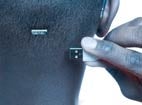The most dramatic task with which IT departments have had to deal during the past decade or so was, and still is, the impact of mobility. The untethering of communications has huge ramifications on employees and outsiders. The latter group includes partners, suppliers and, ultimately, the public.
The next logical evolutionary step in the transition is wearable computing. While it may fall a bit short of having the impact of mobility itself, the ability to meld computing into the clothing, eyewear and other things that attach and append to workers’ bodies will have a profound impact on the workplace – wherever that workplace happens to be.
The impact will be driven to even higher levels by the parallel emergence of machine-to-machine (M2M) communications, which will enable wearable computing to monitor worker status without human intervention.
J.P. Gownder, a vice president and principal analyst for Forrester Research, used an InformationWeek column to offer seven ways in which wearables will be the latest fashion in the enterprise.
He suggests that wearables will be embedded far more deeply in health care systems than the exercise bracelets and other consumer devices worn today. Other areas of change he sees ahead: Retailers will have the ability to greet customers by name and have an idea what they want the moment they enter the store, and video conferencing with technicians while they do tricky jobs at work sites will be common. Employees will have more freedom of movement due to hands-free communications – but less freedom to goof off, since every move can be tracked. Finally, workers will use their own wearables at work. Can the acronym Wear Your Own Wearable (WYOW) be far away?
Kronos Vice President Bill Bartow offered similar but no less innovative examples of wearables in the workplace in a column at GigaOm. The first deals with the added information – and, consequently, increased flexibility – in a production environment. A second focuses on the placement and time utilization of retail employees in relation to the amount of traffic flowing through a particular part of a store. The final is similar, but features far different venues: Placement and control of pain management personnel in a post-op hospital environment.
There are great challenges, however. Bartow points to privacy, the possibility of wearables being a distraction, the impact of the more intensive apps on battery life, and the simple fact that uptake won’t be strong if the users don’t say yes to the connected dress (or pants).
CIO.com’s Al Sacco doesn’t offer a laundry list of examples. He does, however, take a shot at predicting which wearable devices will actually gain traction first. He begins by commenting that wearables so far have made their biggest impact among consumers. That, he believes, soon will change:
In fact, some experts think the true potential of wearable tech, the future of these odd yet intriguing gadgets, lies in enterprise or business use. Like the growth of the Internet and the adoption of the smartphone, though, the evolution of wearable tech won’t happen overnight. Experts say smart CIOs and IT managers should be proactive in preparing for corporate wearables but also wary of embracing novel and untested devices.
It is important to note that Wi-Fi and advanced mobile devices were first popular among consumers. This likely is happening again. Sacco may be correct that wearable technology won’t quickly permeate the deepest level of enterprise planning and procurement. But it also is clear that employees will bring their wearables to work. The precedent set by tablets and smartphones – the invasion of the workplace by consumer gear, thus making it a fait accompli to businesses – undoubtedly will happen again.



